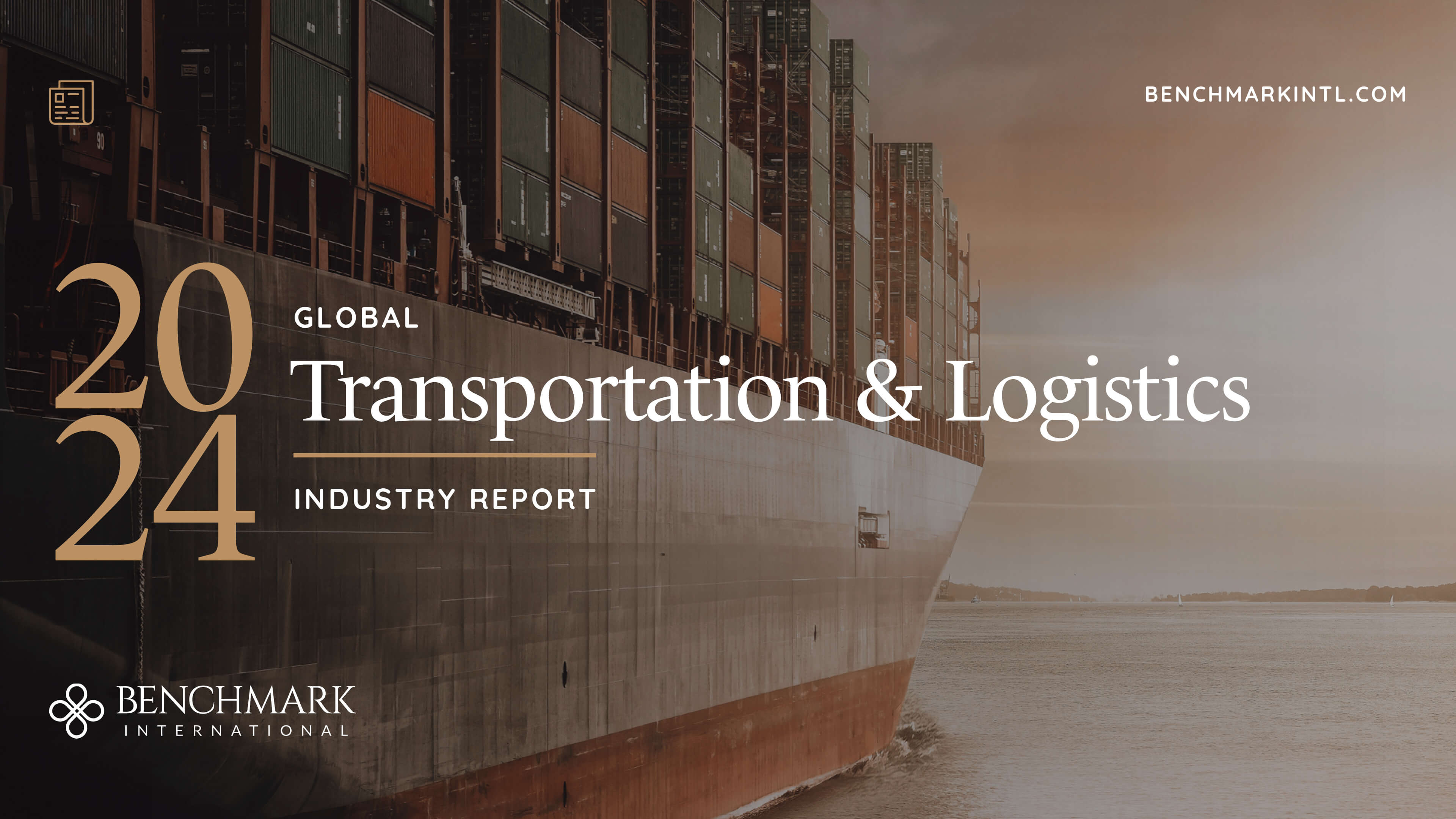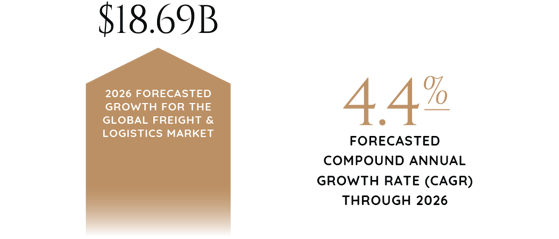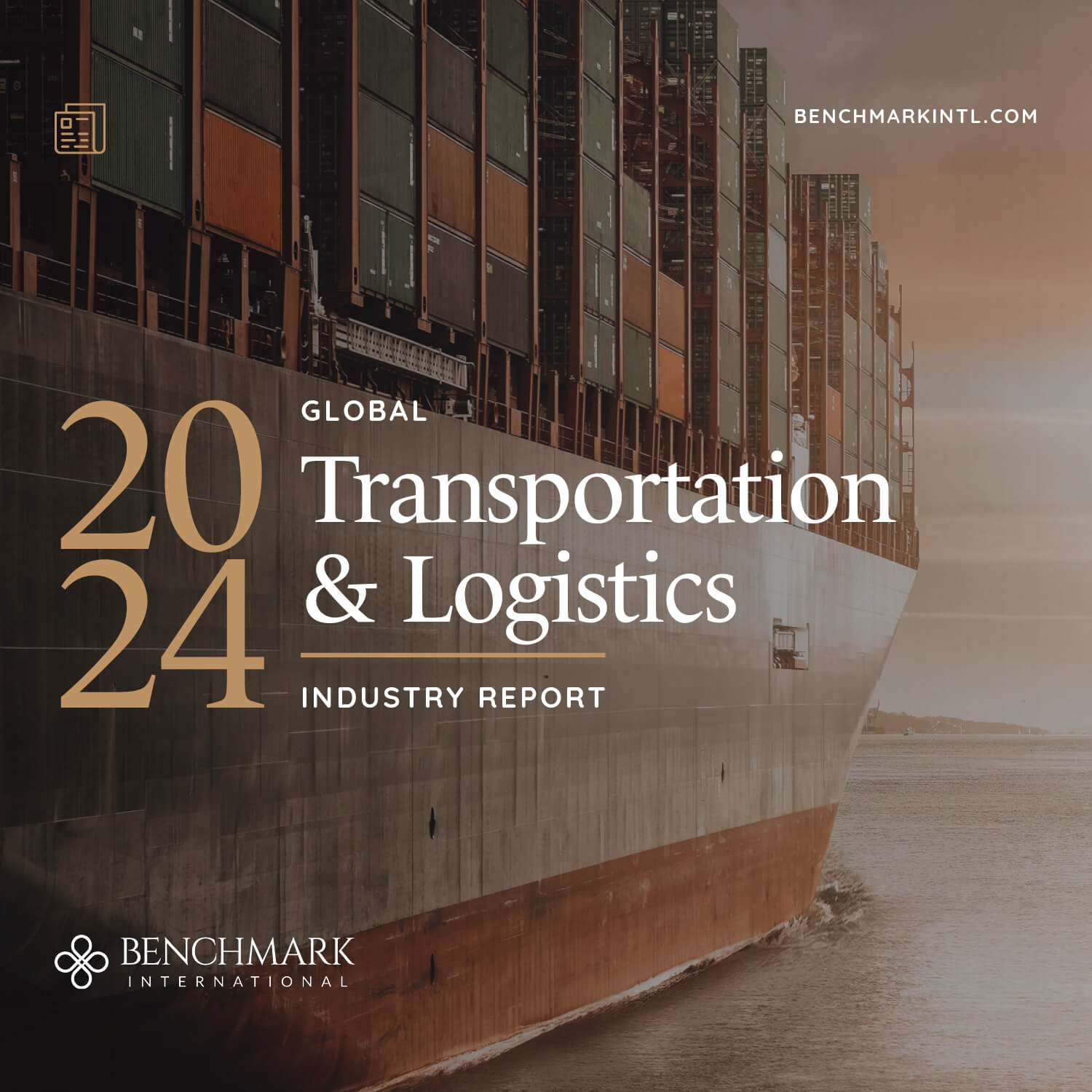
The global freight & logistics market is forecast to grow to $18.69 billion by 2026 at a compound annual growth rate (CAGR) of 4.4%. Looking solely at logistics, the global logistics market is expected to reach $6.55 trillion by 2027, growing at a CAGR of 4.7% between 2022 and 2027. The freight & logistics market includes the sale of services by companies that transport goods and commodities via rail, air, roads, and water, using large vessels in the process of planning and executing the efficient transportation and storage of goods from point A to point B to meet consumer needs in a timely and cost-effective manner.

It includes warehousing, management, transportation, delivery, consultation, packaging, and legal services. It is most commonly employed in sectors such as manufacturing & automotive, oil & gas, mining, agriculture, fishing, forestry, construction, distributive trade, and other end users. The most common types of logistics models are first-party logistics (1PL), second-party logistics (2PL), and third-party logistics (3PL).
Logistics has become an integral and growing part of the global economy as its worldwide applications enable businesses to mark their presence in the international market. The sector allows companies to store and transport resources such as equipment, inventory, food, and materials to the desired destination. It helps organizations create added value, save money, deliver a better customer experience, and improve brand standards. Currently, many companies around the world are looking to strategic logistics management to lower their transport expenses.
The manufacturing sector leads the global market share, as logistics help to improve efficiencies and production rates, cut costs, and boost customer satisfaction. The Asia-Pacific region is the largest in the freight and logistics market, and North America is expected to be the fastest-growing region between now and 2027.

Growth Drivers
Supply-side and demand-side trends broadly impact the global logistics market. One of the significant market demand drivers is the rapid proliferation of trade agreements among various nations. Also, initiatives to increase international trade activities have expanded the demand for logistics to keep up with the needs of importers and exporters.
The logistics sector has also benefited from recent technological advancements, globalization, integration, new legislation, and alliances. Technological advancements include automated material handling equipment, biometrics, robotics, and GPS. They enable businesses to work more efficiently, driving worldwide market growth. The continuing surge in e-commerce and online shopping also supports the market's growth. The pharmaceutical and food & beverage industries also drive the market as they experience continued growth.
Market Trends
Several factors are driving the logistics market on a global scale. One of the most significant factors is the popularity of e-commerce, which continues to grow as the availability of high-speed network connectivity grows. More and more consumers want to shop online, and more home delivery options are available daily. This increases the demand for efficient logistics services.
Companies now offer logistics monitoring systems integrated with advanced tech, such as blockchain, augmented reality, artificial intelligence, and the Internet of Things. These systems enable them to monitor real-time information and offer predictive warehouse management, transportation, and delivery alerts. For example, by using artificial intelligence, shipped goods can be tracked to their exact location, a technology that helps to reduce transit time by nearly 50% compared to the traditional trucking industry.

Also, cargo-monitoring technologies include GPS trackers, RFID sensors, and Bluetooth. Such tracking technologies allow the owners and receivers of products to track their packages in real-time using smartphone apps. These advancements, along with the development of self-service kiosks at warehouses to reduce manual paperwork and promote electronic data interchange technology, will continue to shape the market in the future.
E-commerce significantly impacts the logistics industry, as the pandemic made online shopping the norm. Global e-commerce sales are on pace to reach $6.3 trillion in 2024. Such a surge in online shopping has led to an increase in the overall volume of shipments, pressuring logistics companies to deliver faster and more efficiently. E-commerce growth also presents challenges such as managing returns, offering same-day delivery, and handling a more extensive variety of products.

Logistics operations also benefit from the rise of "last mile" gig economy delivery. When a product leaves a warehouse, it is loaded onto whatever series of vehicles is needed and delivered to a customer's door. The "last mile" delivery is the final step of the process. Last-mile delivery is the most expensive and time-consuming part of shipping. This is because the final leg of delivery usually involves multiple stops and low drop sizes, a problem that is further exacerbated in rural areas where homes are farther apart and equally problematic in crowded cities where traffic slows the process.
Last-mile delivery costs comprise 53% of the total cost of shipping. So, as the gig economy grows, retailers and logistics partners are using crowdsourcing technologies to connect directly with local, non-professional couriers who use their transportation to make deliveries. This allows companies to get their e-commerce orders to customers faster and with lower logistics costs. And, with all the technology and integration with automation across sectors, we will soon start seeing more robots, drones, and self-driving vehicles making deliveries.

Another market trend is that manufacturers are focusing on adopting green logistic solutions and ESG policies to reduce environmental impacts and improve their "green" reputations. Sustainability appeals to eco-conscious consumers and benefits shippers through lower fuel costs. Sustainable logistics lead to better decision-making and opportunities for optimization in procurement, route planning, and reverse logistics.
M&A
The 2024 trucking acquisition market is expected to see a more active year, with market conditions likely to drive buyers and sellers to the table. Lower interest rates and improving market conditions are expected to drive an appetite for trucking acquisitions in the U.S. and Canada in 2024, giving buyers more purchasing power as they expand geographically and add services and customers.
The U.S. government has earmarked hundreds of billions in federal funds to improve transit systems, airports, and passenger rail infrastructure. States are now dispersing these funds, which impacts many companies that provide transportation systems.
Improvements in fleet management will continue to be a key trend in the maritime sector as the resilience of supply chains and the global logistic network remains in question.The digital transformation will continue to provide new M&A opportunities in the maritime sector as new marine platforms are developed and existing ones are consolidated. Autonomous technology will also continue to grow.
Americas: Sam Smoot at +1 (813) 898 2350 / Smoot@BenchmarkIntl.com
Europe: Michael Lawrie at +44 (0) 161 359 4400 / Lawrie@BenchmarkIntl.com
Africa: Anthony McCardle at +27 21 300 2055 / McCardle@BenchmarkIntl.com
ABOUT BENCHMARK INTERNATIONAL:
Benchmark International is a global M&A firm that provides business owners with creative, value-maximizing solutions for growing and exiting their businesses. Benchmark International has handled over $11 billion in transaction value across various industries from offices across the world. With decades of M&A experience, Benchmark International’s transaction teams have assisted business owners with achieving their objectives and ensuring the continued growth of their businesses. The firm has also been named the Investment Banking Firm of the Year by The M&A Advisor and the Global M&A Network as well as the #1 Sell-side Exclusive M&A Advisor in the World by Pitchbook’s Global League Tables.
Website: http://www.benchmarkintl.com
Blog: http://blog.benchmarkcorporate.com

 Benchmark International
Benchmark International  Benchmark International
Benchmark International 







